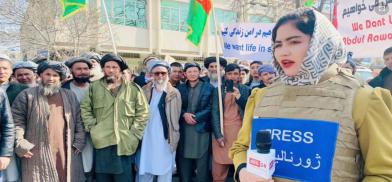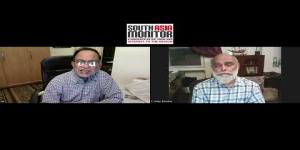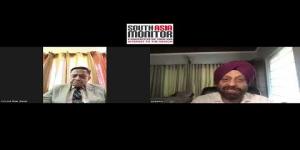A new media watchdog comes up in Kabul; status of women journalists being taken up with Taliban
Amid the grave situation faced by the journalists and media workers in Afghanistan, a new media watchdog has been set up in Kabul

Amid the grave situation faced by the journalists and media workers in Afghanistan, a new media watchdog has been set up in Kabul. According to TOLOnews, the organisation, Nehad Rasana-e-Afghanistan, began operations Thursday and it pledged to protect freedom of expression and the Afghan media community.
At least five journalists have been killed since the Taliban takeover. A senior Afghan journalist and union leader told the IFJ that the fear of being arrested, attacked or killed for reporting in Afghanistan has become a daily reality.
Abozar Saram, head of the organization, said “We are in negotiations with the Islamic Emirate regarding the status of women journalists. The ongoing problems (in the media family) gave us the motivation to create this organization.”
Last month, the International Federation of Journalists (IFJ) cited an Afghanistan National Journalists Union (ANJU) research as confirming widely-held fears in terms of the safety and freedom of journalists and media workers in Afghanistan since the fall of Kabul on August 15.
The ANUJ surveyed 1,379 journalists and media workers from 28 provinces across the country. The IFJ said the findings of its affiliate expose the deleterious environment now confronting the Afghan media sphere. The research highlights the grave risks faced by female journalists, who comprise more than 67% of the journalists and media workers, describing their lives as under threat.
After paying lip service to women’s rights, the Taliban has since instructed media houses to cease women-led programming and removed female journalists from their posts.
According to ANJU’s report, more than 70 per cent of all respondents have received threats since the Taliban came to power nearly a month ago. The majority had been threatened verbally and 21 per cent indicated they had been physically threatened. The report suggests that attacks against journalists and media workers are not only perpetrated by the Taliban, with unknown aggressors accounting for around 40 per cent of attacks.
The fallout of the international withdrawal has also dealt heavy economic implications on the media industry as well as safety concerns. At least 67 per cent of journalists and media workers surveyed have been rendered jobless since the Taliban assumed control.
Media organisations have also been shuttered due to the collapse of the Islamic Republic of Afghanistan, with only 31 per cent of media outlets remaining open. A lack of personal security and immunity was ranked as the highest concern by 41 per cent of respondents, followed by financial stress and a lack of job security by 30 per cent and 29 per cent respectively.
Orders limiting the capacity of Afghanistan’s media are mounting daily, with 11 sweeping media regulations instated on September 19 – which can be arbitrarily interpreted to censor broadcast content and restrict press freedom.
(SAM)









Post a Comment